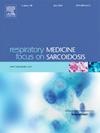膈肌手动疗法对非特异性腰痛患者呼吸功能的影响:一项随机对照试验。
IF 3.1
3区 医学
Q2 CARDIAC & CARDIOVASCULAR SYSTEMS
引用次数: 0
摘要
背景:非特异性腰痛(NSLBP)是一种常见且对常规物理治疗具有抗性的疾病。鉴于膈肌在姿势和呼吸方面的双重作用,它可能是一个治疗靶点。目的:探讨膈肌推拿加常规物理治疗是否能改善非slbp患者的胸廓扩张和肺功能。方法:采用单盲随机对照试验,纳入46例非slbp成人患者(平均年龄46.0±16.2岁,女性43%,BMI 27.2±5.4 kg/m2)。参与者被随机分为实验组(n = 20)和对照组(n = 26),实验组接受隔膜手工治疗加物理治疗,对照组单独接受物理治疗。结果为吸气式胸廓扩张、用力肺活量(FVC)和用力呼气量(FEV1),分别在基线、治疗后和10天和30天随访时测量。采用重复测量方差分析和Spearman相关(α = 0.05)。结果实验组胸廓扩张(平均差值3.31 cm, 95% CI 2.69 ~ 3.93, p < 0.001, η2 = 0.78)、FVC (Δ = 1.24 L, 95% CI 1.11 ~ 1.37, p < 0.001, η2 = 0.76)、FEV1(平均差值1.25 L, 95% CI 1.12 ~ 1.38, p < 0.001, η2 = 0.77)较对照组有较大改善。胸廓扩张与30天FVC (ρ = 0.731)和FEV1 (ρ = 0.751)相关(p均< 0.001)。结论:横膈膜手动治疗可改善非slbp患者的胸廓扩张和肺功能,支持其作为物理治疗辅助的作用。该试验注册名称为“DIAFRAGMA”,注册编号为NCT06069388。本文章由计算机程序翻译,如有差异,请以英文原文为准。

Effects of diaphragmatic manual therapy on respiratory function in patients with non-specific low back pain: A randomized control trial
Background
Non-specific low back pain (NSLBP) is common and often resistant to conventional physiotherapy. The diaphragm, given its dual role in posture and respiration, may be a therapeutic target.
Objective
To determine whether diaphragm manual therapy plus conventional physiotherapy improves thoracic expansion and pulmonary function in NSLBP.
Methods
A single-blind randomized controlled trial included 46 adults with NSLBP (mean age 46.0 ± 16.2 years; 43 % female; BMI 27.2 ± 5.4 kg/m2). Participants were randomized to an experimental group (n = 20) receiving diaphragm manual therapy plus physiotherapy or a control group (n = 26) receiving physiotherapy alone. Outcomes were inspiratory thoracic expansion, forced vital capacity (FVC), and forced expiratory volume in 1 s (FEV1), measured at baseline, post-treatment, and 10- and 30-day follow-ups. Repeated-measures ANOVA and Spearman correlation were used (α = 0.05).
Results
The experimental group showed greater improvements in thoracic expansion (mean difference = 3.31 cm; 95 % CI 2.69–3.93; p < 0.001; η2 = 0.78), FVC (Δ = 1.24 L; 95 % CI 1.11–1.37; p < 0.001; η2 = 0.76), and FEV1 (mean difference = 1.25 L; 95 % CI 1.12–1.38; p < 0.001; η2 = 0.77) compared with controls. Thoracic expansion correlated with FVC (ρ = 0.731) and FEV1 (ρ = 0.751) at 30 days (both p < 0.001).
Conclusions
Diaphragm manual therapy improved thoracic expansion and pulmonary function in NSLBP, supporting its role as an adjunct to physiotherapy.
The trial has been registered under the name of “DIAFRAGMA” and number NCT06069388.
求助全文
通过发布文献求助,成功后即可免费获取论文全文。
去求助
来源期刊

Respiratory medicine
医学-呼吸系统
CiteScore
7.50
自引率
0.00%
发文量
199
审稿时长
38 days
期刊介绍:
Respiratory Medicine is an internationally-renowned journal devoted to the rapid publication of clinically-relevant respiratory medicine research. It combines cutting-edge original research with state-of-the-art reviews dealing with all aspects of respiratory diseases and therapeutic interventions. Topics include adult and paediatric medicine, epidemiology, immunology and cell biology, physiology, occupational disorders, and the role of allergens and pollutants.
Respiratory Medicine is increasingly the journal of choice for publication of phased trial work, commenting on effectiveness, dosage and methods of action.
 求助内容:
求助内容: 应助结果提醒方式:
应助结果提醒方式:


